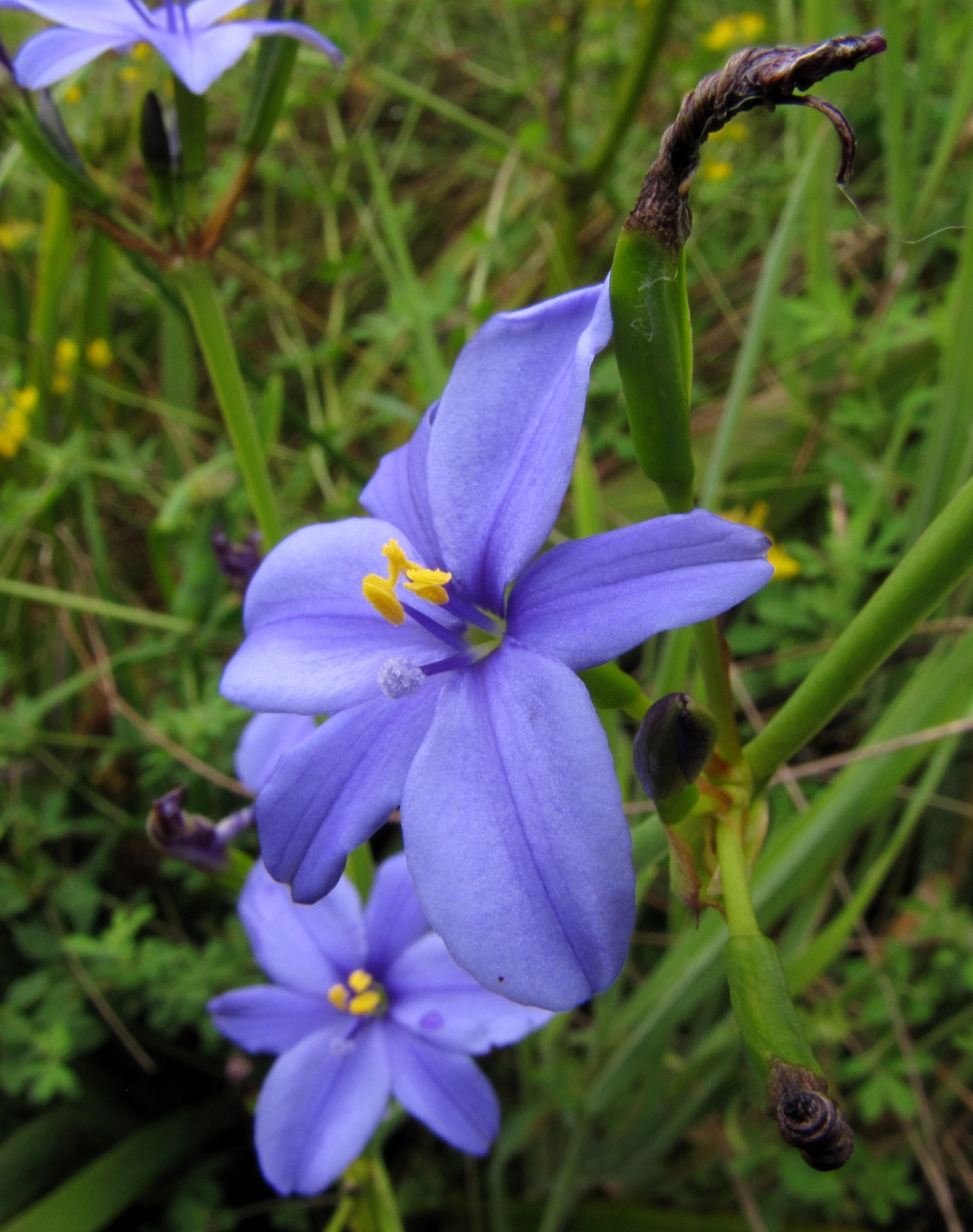Iridaceae
Perennial herbs, evergreen or leaves and flowers annual, with rhizomes or corms. Leaves usually distichous, parallel-veined, equitant and flat or channelled, terete or variously winged in section; basal sheath open. Inflorescence terminal, usually with a long basal non-flowering axis (scape) and distally, either with persistent flowers (each subtended by 2 short primary bracts) in a spike-like arrangement, or with 1–several short-lived flowers arranged in cymose clusters (each cluster subtended by 1 or 2 large primary bracts and each flower with a reduced inner secondary bract). Flowers bisexual, actinomorphic or zygomorphic; perianth in 2 similar or differentiated whorls (inner whorl sometimes reduced) of 3 segments each, free or basally united to form a tube; stamens 3 (2 in Diplarrena), free or united, inserted opposite the outer whorl, either at base of perianth or on the perianth tube, anthers bilocular, basifixed to dorsifixed (± versatile), dehiscence usually extrorse by slits; gynoecium of 3 fused carpels; ovary inferior, 3-locular with axile placentation; ovules few-many; style terminal with 3 branches or lobes, sometimes further divided or petaloid, stigmas papillose. Fruit a capsule; dehiscence loculicidal from apex (in 3 valves); seeds endospermic with a small linear embryo, hard, sometimes with aril.
About 85 genera with some 1500 species–the main centre of diversity is in southern Africa, with secondary centres in South America and the eastern Mediterranean region.
Many species and hybrids (e.g. Babiana, Dietes, Freesia, Gladiolus, Iris, Ixia and Sparaxis) are widely grown as garden ornamentals and for the cut-flower trade. Some species of Moraea, Romulea and Watsonia are serious weeds.
In Australia and, in particular, Victoria, this family is inadequately represented in herbaria, such that it is frequently difficult to assess the taxonomic status of many collections. This account is based largely on the work of Cooke (1986).
Conn, B.J. (1994). Iridaceae. In: Walsh, N.G.; Entwisle, T.J., Flora of Victoria Vol. 2, Ferns and Allied Plants, Conifers and Monocotyledons, pp. 686–716. Inkata Press, Melbourne.
 Spinning
Spinning


